Editor’s Note: This article is for information purposes only. We do not advocate for the use of medications outside their formal licensing and hold no liability for the consequences this may lead to.
By law, an expiration date (or expiry date) must be printed on the packaging of all perishable goods, indicating the date up to which the manufacturer guarantees that the medication will be “safe and effective”. The implication is that we should discard the medicines after that date.
Yet in 1986, the US government established the Shelf Life Extension Program (SLEP), in collaboration with the Food and Drug Administration (FDA), to investigate and extend the shelf life of drugs commonly stockpiled for use in the military. Many were found to be safe and effective long past their licensed expiration date, and had their shelf life extended for military and emergency use.
So what does that mean for the expiration dates printed on the drugs in your cabinet?
How Are Expiration Dates Calculated?
When a manufacturer proposes a drug for licensing by the FDA, they have to demonstrate that the product is stable, safe and effective for a specific period of time after it is produced. Once the drug is licensed, all batches of that drug will be assigned an expiration date based on the date of manufacture and the approved shelf life.
Many manufacturers choose a period of two or three years when testing the shelf life of their products. This is considered a good shelf life for the immediate customer of the manufacturer (pharmacies and hospitals, who don’t want stock going out of date on the shelves). Equally, it is a workable period of time in the manufacturer’s research and development timescale.
Related: Remove These 14 Things from Your Medicine Cabinet Immediately
Does This Mean Drugs Are Dangerous After Their Expiration Date?
Unless someone does the clinical research to test the drug five or ten years after its manufacture, we have no way of knowing for certain whether the medication is still effective, or whether there are any dangerous effects of the product aging.
The manufacturer has nothing to gain from doing this extra research. In fact, focusing on extending the licensed shelf-lives of their products would draw their attention away from more important work, like developing new and better drugs.
So for most products, the research never gets done. They may still be safe and effective for years after their expiration date, but equally, they may be ineffective or, worse, unsafe.
Are There Medicines Which Should Never Be Used Past Their Expiration Date?
There are several groups of medications where exceeding the stated expiration date should be avoided wherever possible. These include:
#1. Vital Medications
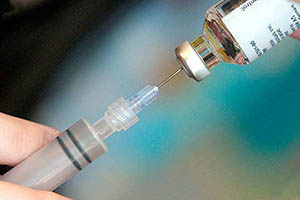 Some drugs are more important than others. If we take a headache pill, and it is only 70% effective, it doesn’t matter too much.
Some drugs are more important than others. If we take a headache pill, and it is only 70% effective, it doesn’t matter too much.
For other drugs, it is more important that we receive the full dose, at full efficacy, every time we take it. This group includes insulin, heart medications, and antibiotics, amongst others. Taking antibiotics that have reduced efficacy from aging is also likely to lead to antibiotic resistant infections.
Related: What Really Happens When You Take Antibiotics After Their Expiration Date
#2. Injectable Drugs
 Certain medications, including insulin and some hormonal treatments, may be prescribed in a liquid form for you to inject at home. These should never be used past their expiration date.
Certain medications, including insulin and some hormonal treatments, may be prescribed in a liquid form for you to inject at home. These should never be used past their expiration date.
This is because they contain preservatives to ensure no bacteria grow in the medication, as it would be dangerous for us to inject ourselves with medication contaminated with bacteria. As safety is not guaranteed past the expiration date of the product, it is important to adhere to expiration dates for injectable medications.
#3. Vitamins
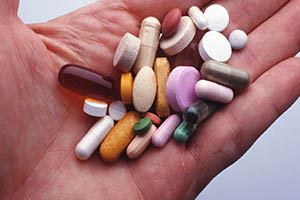 It’s not a good idea to use vitamins after their expiration date, not because they are likely to do you serious harm, but because the stability of vitamins in tablet form is limited and research has shown these ingredients decompose quickly.
It’s not a good idea to use vitamins after their expiration date, not because they are likely to do you serious harm, but because the stability of vitamins in tablet form is limited and research has shown these ingredients decompose quickly.
Vitamin K and Vitamin A are the most sensitive to external factors (like temperature, oxygen, humidity and light) and the most likely to degrade over time.
#4. The “Odd-looking” Medicine
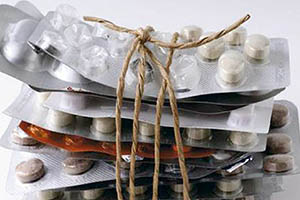 Any medication that looks “odd”, whether the texture looks strange, the color has changed or it looks unusually cloudy, or looks different to normal in any other way, should NOT be taken, even if it is still within its expiration date.
Any medication that looks “odd”, whether the texture looks strange, the color has changed or it looks unusually cloudy, or looks different to normal in any other way, should NOT be taken, even if it is still within its expiration date.
These can be indications that the medication has been exposed to moisture, heat or cold, or some other storage factor that has had an effect on its stability. In these cases, it is best to be safe and to discard the medication safely, rather than risk potential harmful effects.
Related: Top 6 Most Dangerous Medicines For People Over 40; Are You Taking Any of These?
What Can We Learn From the SLEP Program?
While bearing the above points in mind, it is useful to look at the results of the SLEP program to help us make our own decisions about the drugs in our cabinet. Each batch of each drug in the SLEP program is tested separately, and the shelf life extended for each batch individually. The following table summarizes the expiration date assessment results for some of these drugs that have been published so far.
Each batch of each drug in the SLEP program is tested separately, and the shelf life extended for each batch individually. So, for example, for Ampicillin capsules the range is listed as 22 to 64 months, which means the shortest batch was extended by 22 months, and the longest by 64 months. So the mean, or average, extension across all the batches tested by the program was 49 months.
| Category | Drug | Expiration Date Extension (months) | |
| Mean | Range | ||
| Antibiotics | Ampicillin capsules | 49 | 22 – 64 |
| Amoxicillin tablets | 23 | 22 – 23 | |
| Cephalexin capsules | 57 | 28 – 135 | |
| Ciprofloxacin tablets | 55 | 12 – 142 | |
| Doxycycline capsules | 50 | 37 – 66 | |
| Doxycycline hyclate tablets * | 27 | 15 – 91 * | |
| Tetracycline HCl capsules * | 50 | 17 – 133 * | |
| Anti-parasite | Mebendazole tablets | 58 | 28 – 89 |
| Pain relief / Anti-inflammatories | Acetaminophen pseudophedrine capsules | 24 | 24 – 24 |
| Codeine sulphate tablets * | 89 | 16 – 144 * | |
| Naproxen tablets | 52 | 46 – 62 | |
| Heart drugs | Enalapril maleate tablets * | 34 | 27 – 42 * |
| Stomach drugs | Cimetidine tablets | 67 | 59 – 75 |
| Respiratory drugs | Albuterol inhalant** | – | – |
| Guaifenesin ER tablets | 85 | 39 – 122 | |
| Emergency drugs | Atropine sulfate autoinjector* | 57 | 12 – 135 * |
| Diazepam autoinjector* | 63 | 12 – 100 * | |
| Eye ointments | Sulfacetamide eye cream * | 39 | 35 – 44 * |
| Neomycin, polymixin B, bacitracin eye cream* | 79 | 21 – 115 * | |
| Skin medication | Aluminium acetate tablets* | 52 | 16 – 70 * |
| Povidone-iodine ointment | 65 | 35 – 134 | |
Table adapted from Lyon et al. 2006
* Some batches (<50%) failed and could not be extended, or failed on repeat testing. Reasons for failure included failing chemical analysis, and changes in texture or appearance.
** No batches of this drug could have their shelf life extended.
These expiration date extensions make a big difference to the usable time of a drug. To take Ciprofloxacin as an example: the licensed shelf life is 3 years, and as a result of the SLEP program the shelf life was extended by an average of 4 years, giving a total shelf life of 7 years. Even the batches that were granted the shortest extension still received an additional year on top of the licensed shelf life.
While this gives some insight into some of the common drugs in your medicine cabinet, there are groups of drugs that have not been tested in the SLEP program at all. Because the research is expensive, the government strictly limits the program to drugs that are of key importance in an emergency situation. This means there is still a lack of information about the real expiration date of certain types of medicines, including drugs to control cholesterol and allergy pills, amongst others.
It is worth noting that although the SLEP results extended the shelf life of a number of drugs for military and emergency use, the results haven’t been extended to public licensing. This is because of worries over storage conditions: the trialed drugs were stored in optimal military conditions, abiding by all temperature and humidity controls; drugs in your bathroom cabinet may degrade faster. So if you want to consider using your medications past their written expiration date, make sure you are storing them properly.
What Does This Mean for the Drugs in Your Cabinet?
A sensible approach to deciding whether to use a medication that is past its expiration date is to do your own risk assessment, understanding that expired drugs may have reduced safety and efficacy, and considering the potential impact of that, depending on the drug in question.
Knowing that medications do not “go bad” the day after the expiration date written on the packet, but neither can they be guaranteed to be safe and effective after that date, you can make your own decisions about the drugs in your cabinet. But one thing is clear: the manufacturer will not be held responsible for any side effects that arise from you taking medication past its expiration date.
You may also like:
Similar to Morphine: The Best Natural Painkiller That Grows In Your Backyard Video)

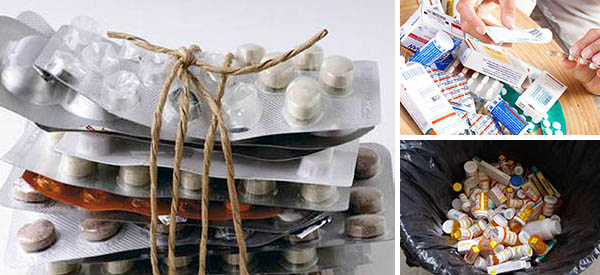
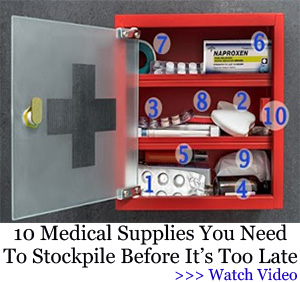













As a pharmacy professional, there are plenty of drugs I would not use past the expiration date. The list included in this article is a good start. I also would not put any expired eye drops in my eyes, unless you want a serious eye infection or worse. Any kind of inhalers go bad pretty fast. I take expired NSAIDS all the time, allergy meds, and vitamins(except for the ones noted above). My husband took some expired for his ulcerative colitis and wound up having a flare-up, which included internal bleeding. So I would be very careful before taking anything expired if it is important. I understand about the money issue. Drugs are expensive. But you are irreplaceable. If you do choose to take something expired, do it before SHTF, at least so you have medical facilities nearby if something goes wrong. Be safe above all else!
My own experience proved that Amoxicillin that was 4 years past its discard by date, still worked as well as a new product.
I realize that time may vary depending on whether it is generic or name brand, and how it is stored.
Mine was stored in a dark, cool, dry place, as recommended. I don’t know if it was generic or brand name product.
A useful article. Thanks for posting it. I guess I can find the reference Lyon et al 2006, but it would have been nice if the complete reference had been in the article so that readers of this list could review the reference for themselves if they wished.
Here’s a link to the full paper to save you some time 🙂
https://ghdonline.org/uploads/drugs-Stability_Profiles-vencimiento.pdf
EXPIRATION DATES ARE PAID FOR! WHEN WE SEND PRODUCTS TO THE LAB FOR TESTING WE PAY A GREAT DEAL MORE FOR EACH EXTRA YEAR WE HAVE THEM TESTED. RESULT IS WE USUALLY ONLY PAY FOR A YEAR OR TWO WHEN OUR PRODUCTS MAY BE GOOD FOR 10 YEARS! JUST SAYIN!
Got to say what’s staring all of us in the face: Medicals you can grow do not go bad in the garden. Even here, limited by heat and drought, we have most of what we need in the garden, the brush, the forests. My family can point that out, because that’s how many of us survived for generations when pill pushers (drug companies) failed us. Generations past often lived twice the average lifespan of their peers outside the Americas. niio
I feel confident that the storage of the drugs that were effective past the use by date was in accordance with the standard advice, 50-60°F, moderate humidity, darkness and stable temperature. Any significant deviation from those storage parameters would lessen the actual life of the drug.
I don’t know of any place that is consistently 50-60 degrees F. A refrigerator is lower that that (34-40 degrees) and the average house temp is around 68-74 degrees. So the optimal temperature recommendation is flawed for the real world.
I found the abstract of the paper upon which this article is based. Unfortunately, if one wants to read the entire paper it costs $40.
I thought the last sentence of the extract would be of interest to followers of this list:
“The SLEP data supports the assertion that many drug products, if properly stored, can be extended past the expiration date. Due to the lot-to-lot variability, the stability and quality of extended drug products can only be assured by periodic testing and systematic evaluation of each lot. © 2006 Wiley-Liss, Inc. and the American Pharmacists Association.”
I think the most important words in the text are “if properly stored.”
I don’t know of any place that is consistently 50-60 degrees F. A refrigerator is lower that that (34-40 degrees) and the average house temp is around 68-74 degrees. So the optimal temperature recommendation is flawed for the real world.
Here’s a link to the full paper, fee-free 🙂
https://ghdonline.org/uploads/drugs-Stability_Profiles-vencimiento.pdf
Very informative